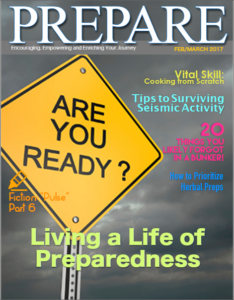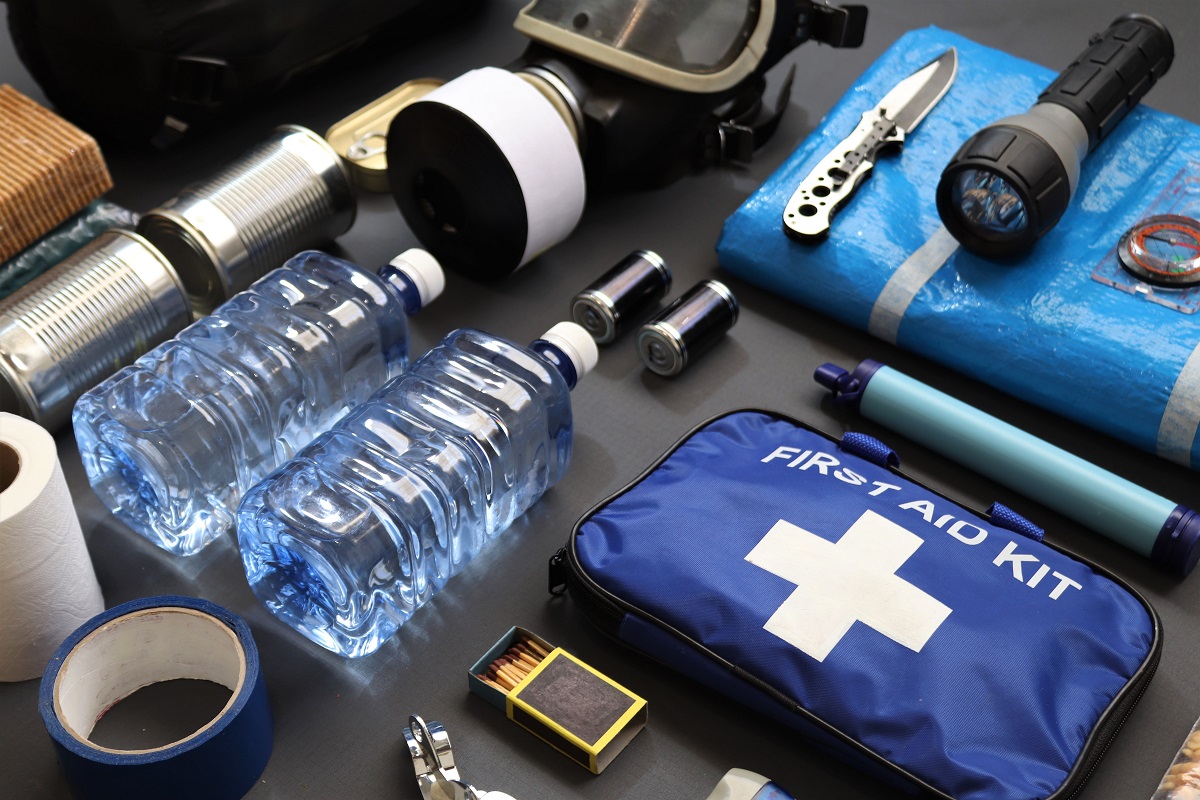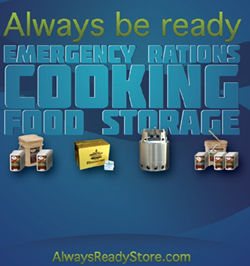When calamity strikes, preparedness is key. A well-stocked bug-out bag can mean the difference between survival and disaster. This post will delve deep into the essentials you need to pack in your bug-out bag, ensuring you’re equipped for any eventuality.
From life-saving tools to sustenance supplies, we’ll explore the must-haves for any survival kit. We’ll also touch on the importance of customizing your bag to suit your specific needs and circumstances.
Stay tuned as we unravel the mystery of survival preparedness. Whether you’re a seasoned prepper or a novice, you’ll find valuable insights here. Let’s embark on this journey together, and ensure you’re ready to face any emergency head-on.
What is a bug-out bag?
 A bug-out bag is a portable kit that contains all the items one would require to survive for 72 hours when evacuating from a disaster. The concept originates from the military, with the term ‘bug out’ referring to the rapid withdrawal in the face of an impending threat.
A bug-out bag is a portable kit that contains all the items one would require to survive for 72 hours when evacuating from a disaster. The concept originates from the military, with the term ‘bug out’ referring to the rapid withdrawal in the face of an impending threat.
A well-equipped bug-out bag holds a balance of survival essentials. These include water and a method to purify it, non-perishable food, and basic tools like a multi-tool, a flashlight, and a fire starter.
First aid supplies are also crucial, along with personal hygiene items. To maintain communication and receive emergency updates, consider including a hand-crank radio or a compact solar charger for your devices.
Moreover, it’s essential to pack for the weather. Include a lightweight, waterproof jacket, a hat, and good quality, durable footwear. Finally, remember to include important documents such as identification, cash, and maps of your local area.
A bug-out bag is not a one-size-fits-all solution. Personalize it based on your needs, considering factors such as dietary restrictions, personal health conditions, and the local climate. Remember, the goal is to keep you safe and comfortable during a critical situation.
Why is a bug-out bag important?
A bug-out bag is a crucial element in emergency preparedness. It is a portable kit that contains the items one would require to survive for 72 hours when evacuating from a disaster. The importance of these bags cannot be understated, as they provide essential supplies for survival situations.
Food, water, shelter, and warmth are the basic requirements for survival, and a well-equipped bug-out bag will contain items to fulfill these needs. High-energy, non-perishable food items and water purification tablets or filters are must-haves. A lightweight tent, sleeping bag, and emergency blanket can provide shelter and warmth.
First aid supplies are another crucial component of a bug-out bag. Injuries can occur during a disaster, and having the necessary supplies to treat them can make a significant difference in survival scenarios.
Communication and navigation tools, such as a radio and compass, are also vital. They can provide necessary information about the situation and help you navigate to safety.
Lastly, a bug-out bag should contain personal items, such as medication, personal documents, and cash. These items can prove invaluable in a disaster situation.
Having a bug-out bag ready not only prepares you for emergencies but also gives you peace of mind knowing that you’re prepared for any situation. It is a small investment that can potentially save lives.
What should be in a bug-out bag?
 A bug-out bag, often referred to as a 72-hour kit, is a lifeline during emergencies. One of the primary items to include is water, either in the form of bottled water or purification tablets. Food is equally crucial; opt for non-perishable items like canned goods, energy bars, and MREs (Meals Ready to Eat).
A bug-out bag, often referred to as a 72-hour kit, is a lifeline during emergencies. One of the primary items to include is water, either in the form of bottled water or purification tablets. Food is equally crucial; opt for non-perishable items like canned goods, energy bars, and MREs (Meals Ready to Eat).
Shelter and warmth are also essential components of a bug-out bag. This can include a lightweight tent, a sleeping bag, and emergency blankets. A good quality first-aid kit is indispensable for treating injuries.
Navigation tools such as a compass and maps of your local area can be vital for finding your way in unfamiliar terrain. A multi-tool, which includes a knife, can opener, and various other tools, can also prove very useful.
Lastly, remember to include a flashlight and extra batteries, a radio for receiving emergency broadcasts, and personal items such as prescription medications and important documents.
Fire-starting equipment — matches, lighters, or a fire starter — can be life-saving, providing warmth and a means to cook food.
In summary, a well-stocked bug-out bag can be the difference between life and death in an emergency situation. It’s crucial to consider all potential needs and scenarios when packing your bag.
Can food be stored in a bug-out bag?
Absolutely, food is a crucial component of any well-stocked bug-out bag. However, it’s not just about tossing in a few snacks. The key lies in selecting the right kind of food. Non-perishable, lightweight, and high-energy foods are the ideal choices. Items such as energy bars, dehydrated meals, canned goods with easy-open lids, and trail mix offer a good balance of protein, fats, and carbohydrates.
Remember to pack a manual can opener if your canned goods require one. You don’t want to be caught in a survival situation with cans of food and no way to open them.
It’s also essential to consider the shelf life of the food you pack. While canned goods can last for years, they are often heavy. Dehydrated meals and energy bars are lighter and also have long shelf lives.
Water is another vital element. While not technically food, it’s arguably the most critical survival necessity. Pack as much as you can feasibly carry, and include water purification tablets or a life straw to ensure you have access to clean drinking water.
• Rotate your food supplies: To ensure your food remains fresh and safe to eat, it’s a good idea to rotate the supplies in your bug-out bag periodically. Check the expiry dates and replace any items that are about to expire.
Food storage in a bug-out bag is not just practical; it’s a survival necessity. By packing wisely, you can have the energy and nutrition you need in an emergency situation. Remember, the goal isn’t gourmet dining; it’s survival. Choose your food items with that in mind.
How to pack a bug-out bag efficiently?
Packing a bug-out bag efficiently involves careful selection and organization of survival essentials. The first item on your list should be water and a means to purify it. This could be in the form of a purification tablet or a portable filter.
Next, a well-packed bug-out bag needs food. Opt for lightweight, high-energy food items like energy bars or freeze-dried meals. Don’t forget a compact cooking system, such as a portable stove and a metal pot.
Shelter and warmth are equally crucial. A lightweight tent or a bivvy sack, along with a compact sleeping bag, can protect you from the elements.
Your bag should also contain a first-aid kit, including bandages, antiseptic wipes, tweezers, medical tape, and pain relievers.
Communication and navigation tools are essential too. These can be a compass, maps, a whistle, and a solar-powered or hand-crank radio.
Lastly, remember to pack multi-purpose tools, such as a Swiss army knife or a multi-tool, and fire-starting items like waterproof matches or a lighter.
When packing these items, remember to balance the weight evenly in your bag. This will make carrying it over long distances more manageable. The goal is to be prepared for any situation while also maintaining mobility.
Efficient packing of a bug-out bag can mean the difference between survival and hardship in an emergency situation. Proper planning and thoughtful packing are key.
What are the best bug-out bag backpacks?
When it comes to bug-out bags, the backpack you choose is as important as the items you pack. The 5.11 Tactical Rush72 is a popular choice among survivalists. This military-grade backpack offers ample storage space and has a robust construction, ensuring durability in harsh conditions.
Another top-rated bug-out bag backpack is the Maxpedition Falcon-II. Known for its compact design and high-quality materials, it is ideal for those who prefer a lightweight yet sturdy bag. The Falcon-II features multiple compartments, allowing for organized storage of essential survival items.
The Condor 3 Day Assault Pack is another excellent option. It boasts a large carrying capacity, making it perfect for storing all the crucial bug-out bag items. Plus, its comfortable shoulder straps reduce strain during long treks.
For those who prioritize comfort, the Osprey Atmos AG 65 is a must-consider. It’s renowned for its Anti-Gravity suspension system that makes heavy loads feel lighter. The Atmos AG 65 also offers various pockets and compartments for easy access to your survival gear.
Lastly, the Mystery Ranch 2-Day Assault Pack is worth mentioning. Its unique 3-ZIP design allows quick access to your gear, and it’s built to withstand rugged use.
Remember, the best bug-out bag backpack for you depends on your individual needs and preferences. Consider factors such as comfort, durability, size, and organization when making your choice.
Is a first-aid kit necessary in a bug-out bag?
Absolutely, a first-aid kit is a critical component of any bug-out bag. When facing an emergency situation, injuries are often inevitable. Having a well-stocked first-aid kit can make the difference between a minor and a major injury, or even life and death.
The kit should include items such as bandages, antiseptic wipes, tweezers, medical tape, and pain relievers. These items can treat a range of injuries, from minor cuts and scrapes to more serious wounds. Additionally, it’s advisable to include personal medication or any specific medical supplies that you or your family members might need.
Another reason why a first-aid kit is essential in a bug-out bag is its utility in survival situations. For instance, the medical tape can be used for repairs, while the tweezers can be helpful in removing splinters or ticks.
Remember, the goal of a bug-out bag is to ensure survival during an emergency. Therefore, every item in the bag must serve a specific purpose. A first-aid kit, with its versatile and lifesaving components, undoubtedly fulfills this requirement. So, when packing your bug-out bag, make sure a first-aid kit is at the top of your list.
How much water should be in a bug-out bag?
The amount of water to pack in your bug-out bag is a crucial factor to consider. As a general rule, it is recommended to carry at least one liter of water per person per day. However, the exact amount can vary based on individual needs, physical exertion, and climate conditions.
For instance, in hot or arid environments, more water may be necessary. It’s also important to remember that water is heavy, so balance is key. You don’t want your bag to be too heavy to carry comfortably.
In addition to actual water, consider including water purification tablets or a life straw in your bug-out bag. These items can be life-savers in situations where you have access to water, but it’s not safe to drink.
- 1 liter of water per person per day
- Water purification tablets
- Life straw
Remember, staying hydrated is vital for survival. So, while it’s essential to pack other items like food, first aid kits, and shelter supplies, water should always be a priority in your bug-out bag.
Concluding Thoughts on Essential Bug-Out Bag Items
In conclusion, understanding the concept of a bug-out bag and its importance is crucial for anyone who wants to be prepared for any unforeseen circumstances. It’s not just about having a bag, but about knowing what to put in it. From food and water supplies to a first-aid kit, the contents of your bug-out bag can make a significant difference in a survival scenario.
Packing your bag efficiently is also a key factor, as is choosing the right backpack. A bug-out bag should be compact yet capable of holding all the necessary items. The inclusion of a first-aid kit is not just an option but a necessity. As for water, the amount to store depends on various factors, including the size of your bag and your personal needs.
In the future, the concept of a bug-out bag may evolve with new survival gear developments and trends. Therefore, it’s important to stay informed and update your bag accordingly. Remember, the goal is to ensure your survival and comfort during a crisis. So, keep refining your bug-out bag and stay prepared.




